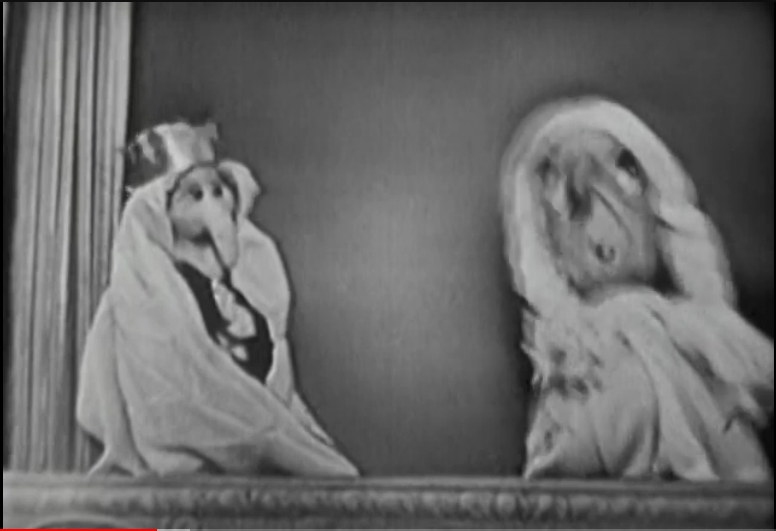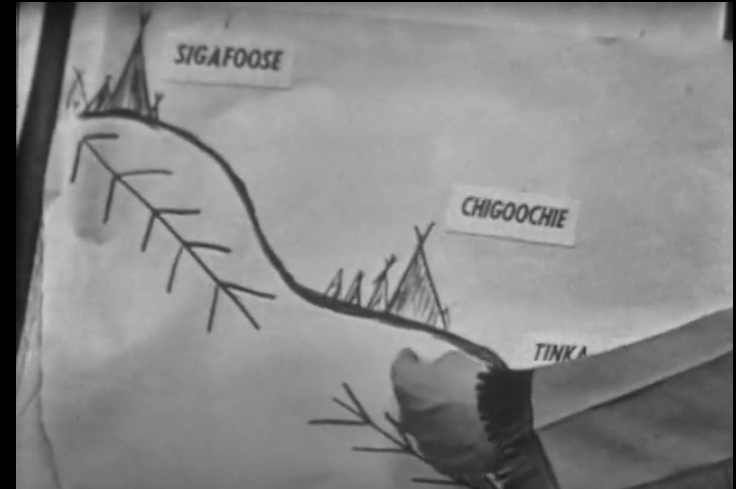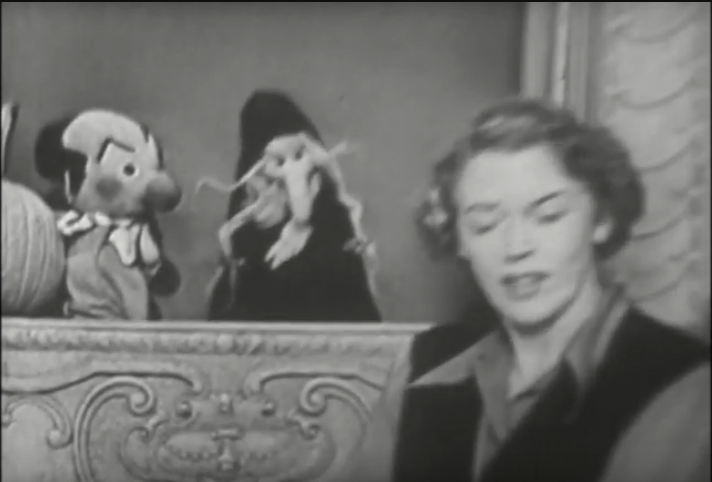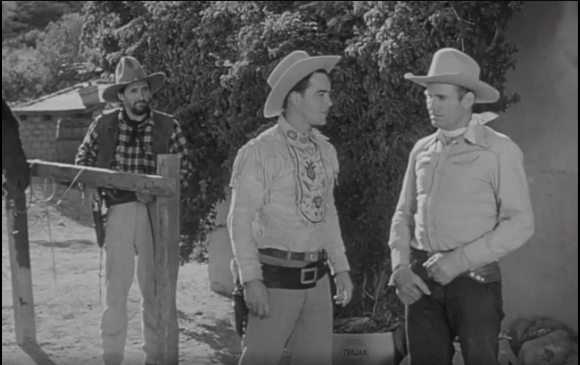What I watched: An episode of the early children’s show Kukla, Fran and Ollie. The series starred the titular Fran Allison, with all other roles being played by series creator and puppeteer Burr Tilstrom. “As You Like It” was directed by Lewis Gomavitz aired on Thursday, November 3, 1950 at 7:00 PM on NBC. Video is available on the official KFO YouTube channel.
What happened: Kukla reminds Fran that today is the production of As You Like It, which Beulah Witch was inspired to put on after seeing Katherine Hepburn perform in the same way. It’s okay, I didn’t know about it either. Fran and Kukla aren’t in it, but she needs to sing a “Shakespearean song.” Fran gives an intro to the production, doing a Colonel Crackle impression. She gets a notice that the role of Phoebe will not be performed, as Mercedes has fallen into the dishwasher, necessitating a “capsule form” of the play.
The real Colonel Crackle begins the narrative with a soliloquy as Orlando, a man of noble station upset at his brother. He refuses to cut his speech short, and as such is yanked off stage. The Colonel notes that there was a competition for the role of Rosalind which involved both Madame Oglepuss (whose first name we learn is “Ophelia”) and Beulah Witch wearing boys’ clothes to see who could better pull off the cross-dressing scenes. I would have liked to see that.
The two women take the stage, and get immediately mixed up in their expository conversation. Fran interrupts to tell them to get a move on. Fran reminds the audience of an event promoting the KFO record in Chicago, and sings a brief song. Cecil Bill is freaking out because the set for the wood of Arden isn’t complete yet. Madame O (we’re still not on a first-name basis) delivers an ad for the RCA Victor TV cabinet in her near-incomprehensible high society accent, including an appearance from a silent Linwood.
We finally get to see Beulah in boys’ clothing, and she makes sure to rub her victory in over Oglepuss. Ollie finally appears in an extremely fancy hat and gives his version of the famous “All the world’s a stage” speech, before getting mixed up with other famous soliloquys and settling on a nautical song instead. Fran arrives and cheerfully tells him that the play is going terribly.

Things are going so bad that Beulah decides that she’s quitting. Katharine Hepburn would never. This causes the others to throw in the towel as well. This leaves Kukla and Fran to take up the roles of Orlando and Rosalind, singing a love song to each other. Ollie applauds them before they sign off to another RCA Victor ad.
What I thought: “If I were a woman, I would kiss as many of you as had beards that pleased me, complexions that liked me, and breaths that I defied not. And I am sure as many as have good beards, or good faces, or sweet breaths will for my kind offer, when I make curtsy, bid me farewell.”
The curtain fell, then come back up for the bows, then fell again. Katharine Hepburn breathed a sigh of relief. No matter how many times she did the play, she was still certain that she would make a hash of it in every split-second before she took the stage.
Backstage, she found a bouquet of roses in her dressing room. When she turned around, her dear friend Laurence Olivier was standing there. Katharine embraced him. “Laurence! Why, you should have told me you were coming. I may have given a better performance.”
“No such thing would be possible, my dear,” said Laurence. “I just thought I would welcome you in person to the fraternity of us who have laboured for the Bard. He is a difficult master, but a rewarding one.”
“Yes, it has been a great change from Hollywood studios,” said Katharine. “It’s just…”

Laurence raised a concerned eyebrow. “Something troubles you?”
“I was watching the television yesterday evening,” said Katharine. “And I saw a group of puppets performing the same comedy. And compared to them, I was but a child screaming his half-learned lines.”
“Oh Kate,” said Laurence. “We are but the Salieri to the Kuklapolitans’ Mozart. Every true actor must make their peace with the fact that, in this generation, the true thespians are all made of felt.”
Coming up next: We stay in Chicago for a wrestling show headlined by Gorgeous George.
















